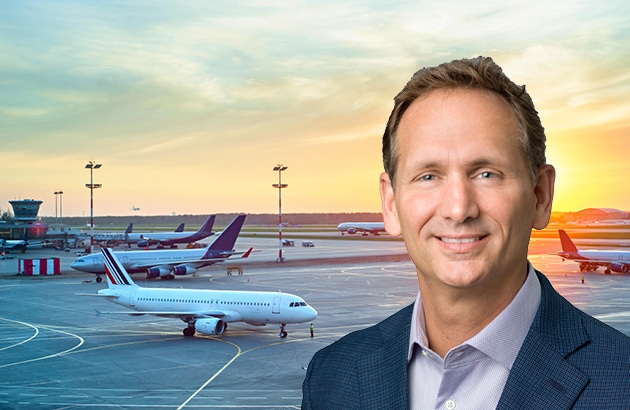
Prior to the start of the COVID-19 pandemic, the aviation market sector was booming with activity. Air travel had grown steadily for almost 20 consecutive years. To accommodate that growth, aviation hubs throughout the United States were undergoing massive capital improvement plans to increase capacity, enhance amenities, and make traveling from terminal to terminal easier.
Now in the wake of a sharp decline in air traffic over the past year thanks to COVID-19, the aviation sector is starting its ascent back to pre-pandemic activity levels. And industry leaders like Joe Thompson, STV senior vice president and national aviation practice lead, are helping clients navigate this new path forward.
“The industry is still finding its footing in trying to figure out what this ‘new normal’ will look like,” said Thompson, who joined STV in late 2020. Thompson has some 30 years’ experience supporting design and construction efforts for improvements at major aviation hubs like Los Angeles International Airport (LAX), George Bush Intercontinental Airport in Houston, Hartsfield-Jackson Atlanta International Airport and LaGuardia Airport in New York.
“But one thing that has become very clear is that airports are now looking to find new ways of doing things to be more proactive and resilient against a future pandemic, said Thompson. “They are looking at the master plans that were prepared before COVID and reprioritizing improvements to meet immediate needs, while also providing long-term value to the airlines and customers.”
That means investigating in infrastructure such as touchless kiosks and other equipment in check-in areas, and larger terminals that can accommodate more gates and flights that will, in turn, keep people a little more spread out while traveling.
At the same time, despite this shift in philosophy and priorities, it’s imperative that “airports make it as easy and comfortable as possible for people to travel,” Thompson said. “One of the great challenges the industry currently faces is meeting the needs of a whole spectrum of customers.”
STV, with its long-standing tradition of providing design and construction and program management services at major aviation hubs throughout the country, including John F. Kennedy International Airport (JFK), LaGuardia Airport, Newark Liberty International Airport, Logan International Airport and Hartsfield-Jackson Atlanta International Airport, is well positioned to help its clients meet these new post-COVID challenges. The firm’s client-focused approach has given STV a well-earned reputation throughout the industry.
“STV strives to provide services to clients with 100 percent of their interests in mind,” Thompson said. “This client-focused philosophy starts at the employee level of the company. It’s inherent in what we do. Whether we’re providing staff augmentation services or are the lead designer of a major design-build project, we aspire to always look out for the client.”
The firm’s multidisciplinary skillset allows STV to serve aviation clients in multiple ways for terminals and airside and landside infrastructure. A recent notable project involves sewer design at Charlotte Douglas International Airport. Additionally, STV served as the lead designer for AirTrain JFK, which connects Jamaica Station in Queens with JFK, and was the first new rail line built in New York City in more than 40 years.
“Our experience in transportation, whether it’s air, bus or rail, and all of the associated facilities such as stations and parking garages, gives our firm a distinct advantage in the aviation sector,” Thompson said.